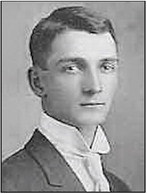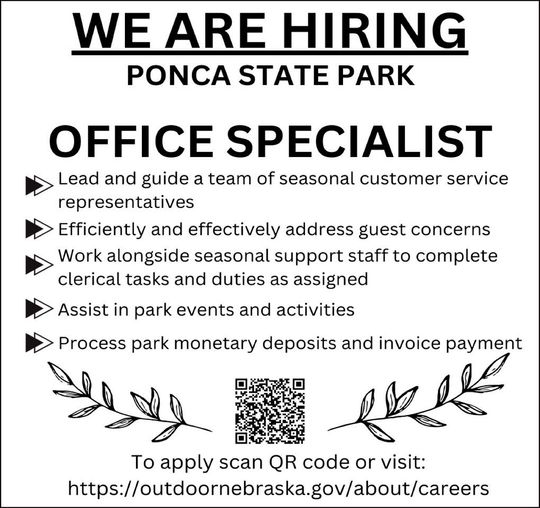John B. Adkins
World War I
John Barney Adkins was born at Howard, SD, on Feb. 15, 1893, where he graduated from Oldham High School. His parents had come to South Dakota from Wisconsin and homesteaded land which was acquired through a tree claim from the government. John was the third of four children born to John Jackson Adkins and Hattie Adkins. His siblings were Goldie, Berchard “Burch” and Hazel, who died at about 6½ years old. According to their family history in the centennial book, “John began working in a bank while he was in school and later, he and his brother Burch bought three banks. At the beginning of the Great Depression, the banks closed. John was proud of the fact that none of the depositors lost any of their money.” But before his lengthy career in banking began, John joined the Army during World War I. He served from June 27, 1918, to Dec. 2, 1918, and was stationed at Camp Funston at Ft. Riley, KS. John married Margaret Laurson on Dec. 4, 1917, only a few months after registering for the draft, and almost 7 months before getting called to service. Luckily, he only served a few months before he was able to come home to his wife.
The couple had two children, Richard and Elizabeth, before moving to Norfolk in 1927. John became manager of the Butterfield Land Company, headquartered in Norfolk but with extensive interests in the Osmond and Wausa areas.
When the Osmond Cooperative Credit Association was liquidated, John was presented with the opportunity to charter his bank — Osmond State Bank — which opened on either Nov. 1 or 2, 1938, depending on which record you look at.
Coincidentally, Osmond State Bank was located in the “old bank building,” now the location of the Osmond Republican, which still has the old bank vaults in it.
During the first days of business, there were three employees on the staff — John (who continued to live in Norfolk) at president, Alfred Pilger as cashier and Ted Goeres as assistant cashier. In 1946, Richard Adkins joined his father on the staff.
Richard Adkins Jr. and Dr. John J. Askins were elected to the board of directors in 1978, making three generations of the Adkins family associated with the bank. When Richard Sr. died, his wife Mollie joined the staff and became chairman of the board.
Although John and his family lived in Norfolk, his main interest was in Osmond. He was a member of the Osmond American Legion, Osmond Community Club and Osmond Senior Citizens. . He was also a member of the Norfolk Elks Club, Masonic Lodge, the 40 & 8, and the United Church of Christ.
One of John’s favorite pastimes was golf, so he carried his golf clubs in his car in case there was an opportunity to play. He was a member of Rolling Hills Golf Club and continued to play until shortly before his death. The John B. Adkins Tournament was an annual event held there in recognition of his contribution to the game.
After Margaret was killed in a car-pedestrian accident in 1975, John moved to Osmond where he made his home with Richard and Mollie. His daughter Elizabeth, died in March of 1980 and his son Richard died in September of the same year.
John died Jan. 6, 1982, at Osmond General Hospital. At the time of his death, he was the chairman emeritus of the board of directors at Osmond State Bank.
Services were held at United Methodist Church, and he was buried with his wife in Prospect Hill Cemetery at Norfolk.
Incidentally, John’s son Richard was also in the military. He served in the Navy during World War II. A history of Richard E. Adkins will be written at a later date.
Protect yourself, loved ones from West Nile Virus
LINCOLN The first reported human case of West Nile virus (WNV) for the 2025 season has been detected in the East Central District Health Department. While no mosquito pools have tested positive for WNV so far this season, it is important to remember that not all areas where mosquitoes might be found are sampled, but could still contain mosquitoes carrying WNV. These areas include any instance of standing water found in parks, communities, and backyards across our state. The Nebraska Department of Health and Human Services encourages residents to take proactive steps to protect themselves and their loved ones from WNV.
WNV is the leading cause of mosquito-borne disease in the United States. Transmission of WNV occurs through the bite of a mosquito that has acquired the virus by feeding on an infected bird. In turn, the mosquito passes the virus
to humans. Humans cannot get WNV from a dead bird.
"Since there is no vaccine or specific medicine to treat West Nile virus, it is important for Nebraskans to take preventive steps to reduce their risk of mosquito-borne illness and enjoy their summer safely,” said Dr. Sydney Stein, DHHS state epidemiologist.
People can reduce their risk: Use a repellent that contains DEET, picaridin, lemon eucalyptus oil, or IR3535.
Wear long-sleeved shirts, long pants, shoes, and socks when outside. Take extra precautions when going outdoors at dawn and dusk when mosquitoes are most active.
Drain standing water around your home. Empty and change the water in bird baths, fountains, wading pools, rain barrels, and potted trays at least once a week, if not more often.
Irrigate lawns and gardens carefully to prevent water from standing for several days.
Make sure window and door screens are “bug tight” and repair or replace torn screens.
Most people who are infected have no symptoms or only mild flu-like symptoms. Less than 1% of people infected with WNV become severely ill. However, people over 50 and those with weakened immune systems are especially vulnerable to the disease and are more likely to experience serious consequences.
Additional information can be found on the DHHS website at: https://dhhs. ne.gov/pages/west-nile-virus.aspx.








